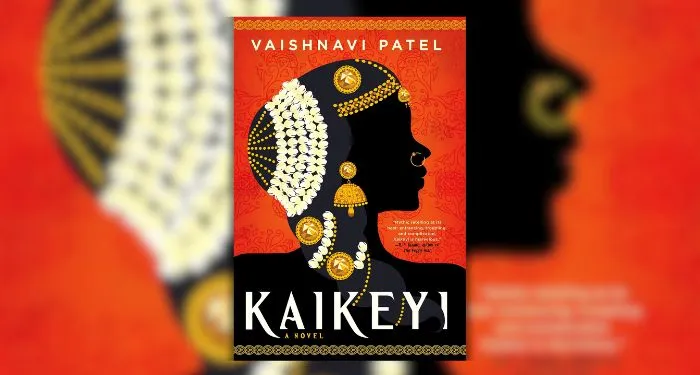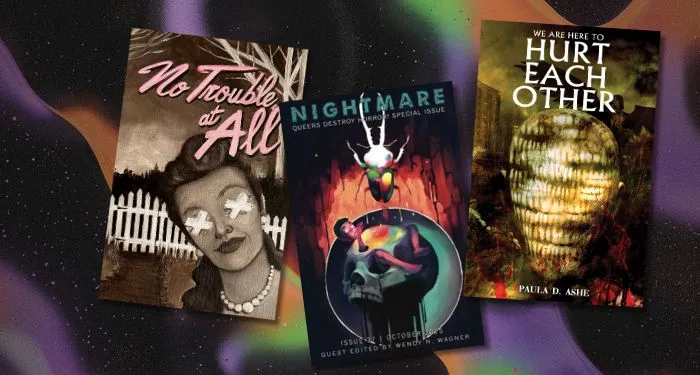For Authors
Every author dreams of crafting a flawless, seamless series, but reality often has other plans. When you’re deep into a long-running story, inconsistencies happen: forgotten side characters, contradictory timelines, or plot twists that don’t age well with later books. That’s where retconning comes in. Rather than rewriting history, a smart retcon lets you reshape mistakes into meaningful story arcs that feel intentional and even strengthen your worldbuilding.
In today’s blog, Ginger explores how authors can use retconning to repair, refresh, and even reinvent their series while keeping readers engaged. Drawing from pop culture, literature, and his own experience, he shows how to fix past errors gracefully, turn inconsistencies into new layers of intrigue, and use the flexibility of self-publishing to your advantage. If you’ve ever looked back at an early book and wished you could tweak the past without breaking the present, this article is for you.
In the world of storytelling, consistency is king—or so we’re told. But what happens when your sprawling series takes an unexpected turn, or you spot a glaring inconsistency years after publication? Enter retconning, short for “retroactive continuity.” This narrative technique allows writers to revise past events, characters, or details to fit new developments, ensuring the story remains cohesive without derailing the overall arc.
(It also drives some fans crazy, just to warn you!)
Retconning is a time-honored tradition, used by some of the greatest authors of our time and justified in various creative ways. Terry Pratchett, for example, explained his retcons by claiming: “There are no inconsistencies in the Discworld books; occasionally, however, there are alternate pasts.”
For us self-published authors, who are often juggling writing, editing, and marketing all on our lonesome, retconning can be a lifesaver. Trust me, I speak from experience! (More on that below.)
Retconning empowers you to fix mistakes, evolve your series, or pivot plots without having to start from scratch, and it’s a narrative tool that’s perfect even in the digital era of publishing.
Since the advent of the Kindle, you might think there’s no need to retcon anything. Unlike traditional publishing, where gatekeepers might frown on changes, self-publishing gives you the freedom to update ebooks even if they’re currently available for sale, releasing revised editions to “correct” the mistakes of previous books.
But a lot of authors (well, me, at least) don’t like “correcting” books post-publication because it means there are various different copies floating about, it confuses readers who finished your book prior to you changing it, and—let’s face it—it kind of feels like cheating.
Sure, we screwed up a plot point, changed our mind about what happened, or need to take the series in a different direction, but as a writer, we should own that mistake and try and fix it in the present instead of rewriting the past!
That’s where a good retcon comes in.
So let’s explore how retconning works, using real-world examples, and discuss how you can apply it to your own series if you choose to.
The Art of the Retcon
Retconning has become a staple in modern film and television, where long-running franchises must navigate decades of lore. Take Star Trek: Strange New Worlds, a prequel series set before the original Star Trek (TOS). It’s a fantastic series that just wrapped up its third season, but left a lot of hardcore Trek fans scratching their heads because of inconsistencies between the lore of the classic show and the narrative of the new one.
For example, take the Gorn. These alien antagonists were first introduced in TOS’s “Arena” episode, where Captain Kirk encounters them as an unknown species to the Federation. You’ve probably seen that episode even if you’re not a fan, it’s the one with Kirk beating up a big, rubber alien in the California desert.
In Strange New Worlds, however, Captain Pike and his crew face the Gorn multiple times, establishing early conflicts and even depicting them as more monstrous and intelligent than the rubber-suited version from the 1960s. Showrunners explained this by emphasizing that the Federation’s vastness allows for isolated encounters, retroactively making the Gorn a known threat in Pike’s era while preserving Kirk’s “first contact” as official records catching up.
This retcon attempts to refresh the lore for new audiences without invalidating the classic episode, showing how retconning can bridge old and new canon. Whether the retconning is successful or not depends just how hardcore you want to be about it.
Another example comes from the DC Universe’s Peacemaker TV series. In Season 1’s finale, Peacemaker (John Cena) mocks the Justice League after a battle, with the DCEU incarnations of Superman, Wonder Woman, Aquaman, and The Flash showing up late.
But with James Gunn rebooting the DCU, Season 2 needed to align with the new continuity. The premiere episode cleverly retcons this by recapping the scene in a “Previously on” segment but replaces the League with the Justice Gang, from the recent new Superman movie, implying the original cameos were exaggerated or misremembered in Peacemaker’s mind.
Gunn called it a “simple retcon” to fit the show’s place in the rebooted universe, avoiding convoluted explanations. This move pissed off some fans but delighted others for its meta-humor, proving retconning can be playful and self-aware, especially in superhero genres where reboots aren’t just common, but have a long and storied history all of their own (check out the Crisis on… storylines for countless examples.)
I did a Retcon…
The DC universe and Star Trek are sprawling franchises with a lot of lore to navigate, making retcons practically essential, but you don’t have to be in charge of a 50-year-old series to run into continuity issues. I promised earlier that I’d tell you about my own issues, so let me make good with a quick story about the brother-that-never-was from my own 12-book biker romance series about The Knuckleheads MC.
I encountered a classic retcon scenario that many self-published authors will relate to during the process of writing one of my later books. In the first book of the series, No Way Out, I introduced Coyle, the charismatic leader of the Knuckleheads Motorcycle Club, alongside his menacing and villainous “brother,” Raine, who played a key role in a tense subplot involving corrupt police officers and a crusading FBI agent.
At the time, Raine added depth to Coyle’s backstory, showing the darker side of his character. But as the series grew—focusing on other members of the club and their romance arcs—I completely forgot about Raine!
By Book 3, I described Coyle as having no siblings during an emotional moment, emphasizing his lone-wolf persona. Fans didn’t notice at first, but by Book 8, sharp readers started pointing out the inconsistency in reviews and emails. I didn’t catch it myself until revising for Book 9, though. Panic set in: How could I fix this idiotic mistake without alienating my audience or rewriting everything?
The solution? A strategic retcon. The ninth book of the series, Queen Bee, is told from the perspective of Coyle’s former lover, Betty (who was a pretty major character in the first book.) Telling the story from her perspective allowed me to reintroduce Raine during a high-stakes confrontation in a dangerous biker bar.
She was closer to Coyle than anybody, which means she knew Raine as well, and in this book revealed that he and Coyle were “as close as brothers” but not actually blood-related. To explain the misconception from Book 1, Betty clarifies that the original narrator, Christy, had assumed Raine was Coyle’s biological brother based on the tight bond she’d witnessed, and since that book was about her escaping the club, it made narrative sense that she might have not known Coyle well enough to figure out the truth.
This retcon didn’t just allow me to “fix” the mistake in the first book, it also allowed me to deal with the troublesome Raine so he didn’t come back to cause any more problems in the future. In a dramatic twist, readers learn that Raine betrayed Coyle, leading to his satisfying death at Betty’s hands.
This not only resolved the error, but I like to think it actually added some layers to my story! A little extra betrayal and vengeance, enriching not just this novel, but maybe even the series as a whole. Readers loved the intensity and some even praised the reveal without realizing it was a “fix.”
…and so can you!
My experience with retconning isn’t unique, many authors writing long series face similar issues. Whether it’s forgetting a minor character’s fate, shifting world-building rules, or deciding to take the plot in a bolder direction, the longer your series, the greater the inevitability of inconsistencies creeping in.
Because we’re writing without big editorial teams, our books are especially prone to this kind of thing. We’re building worlds book by book, often under tight deadlines, and even though these characters live and breathe inside our heads, we can’t be expected to remember everything.
This is where having a diligent editor can help—or even better, a team of beta readers who will be able to spot these mistakes even if you can’t. But while sometimes the need to retcon things is accidental, like my brother blunder; other times, the decision is intentional. You might want to introduce a new love interest or escalate the stakes in your drama and by the time you reached that point, you’ve already written yourself into a corner.
In fantasy series, for example, an author might want to retcon a prophecy to allow for more books in the series. In romance, a “dead” ex could return alive to spark future drama even after the initial “happily ever after.”
Whatever justification you have, I support it—but the key is execution. Done poorly, retconning feels like a cheat. Done well, however, it can add so much to your series.
Examples from Popular Literature
The good news is that we have a lot of material to draw from when it comes to getting retroactive continuity right. Popular literature is rife with retcons in sequels and prequels, offering countless lessons for us to study.
Arthur Conan Doyle’s Sherlock Holmes series provides a classic example. In the 1893 short story “The Final Problem,” Holmes plummets to his death at Reichenbach Falls while battling Professor Moriarty, a move Doyle made to end the series and focus on other work. Fans revolted, however, demanding more from the World’s First Consulting Detective.
(I imagine the folks at Strand magazine, who published the original stories, were similarly eager for Doyle to keep producing them.)
Eventually Doyle relented, and in his reluctant 1903 sequel “The Adventure of the Empty House,” the author found himself forced to retcon Sherlock’s death, revealing that Holmes faked it to evade his enemies. In reading the story, we learn that Holmes climbed a hidden ledge at the falls and remained in hiding for years, even from his best friend, Dr. Watson.
Doyle did a solid job with this retcon. This resurrection not only revived the character and the series, but added an additional layer of intrigue to what we already understood to be Holmes’ towering intellect. Doyle turned a seemingly irrevocable narrative endpoint into a clever plot device, giving us a masterclass in using retconning to respond to audience demand.
Michael Crichton’s Jurassic Park series offers another solid example. In the 1990 novel Jurassic Park, we’re led to believe that mathematician Ian Malcolm died from his injuries after getting turned into a chew toy by an itinerant Tyrannus Rex.
However, Jeff Goldblum’s portrayal of Dr. Malcom in the 1993 movie adaptation made him an instant fan favorite, and the script had him surviving the encounter. This meant that when Crichton started writing his 1995 sequel The Lost World, new readers expected Malcolm back!
Crichton stepped up to the challenge and retconned the death by implying that medical intervention had actually saved Ian off-page. It’s a classic example of how “saying less” can often say a lot more, since keeping the explanation for Ian’s survival minimal helped readers gloss over the retcon and focus on the new adventure, instead of overexplaining things.
While we’re on the subject, it’s worth remembering that prequels often retcon, too.
Gregory Maguire’s 1995 novel Wicked: The Life and Times of the Wicked Witch of the West reimagined L. Frank Baum’s The Wonderful Wizard of Oz by adding pages and pages of retroactive continuity.
In Baum’s original, the Wicked Witch of the West is a one-dimensional villain melted by water in the final act, and that’s all Baum probably envisioned for her.
But Maguire took that one dimension and crafted a whole book out of it, retconning the Wicked Witch as Elphaba, a misunderstood green-skinned activist fighting oppression (and justifying her “evil” as societal bias against her cause.)
Maguire’s retconning spawned a legacy almost as impactful as the original Wizard of Oz, turning archetype into tragedy, and inspiring a hit musical and blockbuster movie. Wicked demonstrates how retconning can expand universes far beyond what the author ever had in mind when writing the original.
How to Retcon Without Regret
To wrap up, here are practical tips for using retconning in your own books:
- Plan Ahead Where Possible: Retconning is often done out of necessity (as in my case) but where you can, plan ahead and leave some openings in your story for events you haven’t even considered yet. Outline your series loosely, noting key details in a “bible” document. This minimizes future retcons, but leaves room for future flexibility.
- Make It Organic: It’s important to tie your retcons to character growth or new revelations. In my series, revealing that Raine wasn’t really Coyle’s brother made sense because Christy was removed enough from the club’s leadership for it to make sense that she’d misunderstood their relationship.
- Use Misdirection or Unreliable Narrators: Retcons don’t just have to be mistakes, however. You can also frame inconsistencies as deliberate lies by a character—or even dreams, like they used in the 1980s TV show Dallas to retcon the murder of fan favorite Bobby Ewing! While we joke about that conceit now, it worked well enough to keep the show on the air for years to come.
- Test with Beta Readers: I strongly recommend sharing your retcons with beta readers long before you hit publish, to gauge if the changes work for your readers. You can make adjustments based on their feedback to avoid alienating fans of your series.
- Leverage Self-Publishing Tools: And while the whole point of a retcon is to “correct” things from previous books, you should take the opportunity to update your backlist eBooks and announce changes transparently in your author notes to make sure your readers don’t feel hoodwinked.
- Keep It Minimal: The death and survival of Jurassic Park’s Ian Malcom is a great example of saying more by saying less. Don’t overexplain your retcons beyond the essential information, your fans will fill in gaps.
- Embrace Fan Input: Speaking of fans, listen to them! If your readers spot errors or inconsistencies, turn them into opportunities for future books. You can even poll your newsletter list for ideas on fixing niggling problems they’ve identified.
- Document Changes: If I’d kept a “series bible” like other successful writers do, the issue of Coyle’s brother-but-not-really would never have happened. It’s too late for me, but I recommend keeping tabs on all the major details from your series, and make special note of retcons in this “bible” to ensure consistency in future installments.
Conclusion
However you choose to tackle it, just remember that retconning isn’t cheating—it’s storytelling evolution. With careful craft, it can transform blunders into brilliance, keeping your series fresh and engaging. It can open whole new narrative worlds for your characters to explore. It can breathe new life into old books in ways you might never have anticipated when you first wrote them.
As a self-published author, it’s important to remember that you hold the reins to your narrative. So don’t be afraid to reinterpret what you’ve already written, and make changes that can help your series grow and endure. As long as you do it right, retcons can be an exhilarating tool that helps breathe new life into established stories.
Or, at least, that’s my view. What do you think? Have you ever been forced to retcon elements from your book series? How did you tackle the challenge? I’d love to read about it in the comments section below.
Share this blog
About the Author

Ginger is also known as Roland Hulme - a digital Don Draper with a Hemingway complex. Under a penname, he's sold 65,000+ copies of his romance novels, and reached more than 320,000 readers through Kindle Unlimited - using his background in marketing, advertising, and social media to reach an ever-expanding audience.


















 English (US) ·
English (US) ·